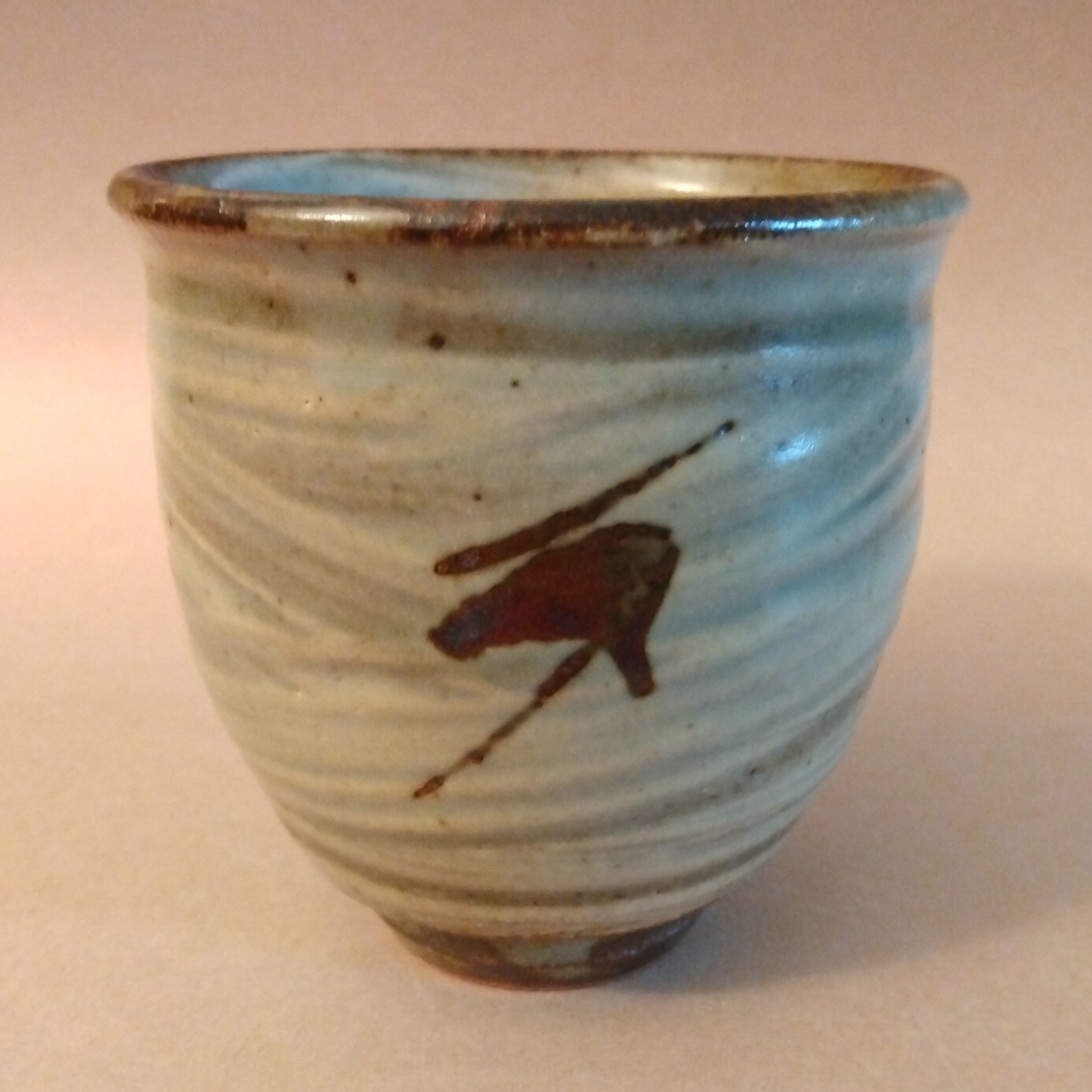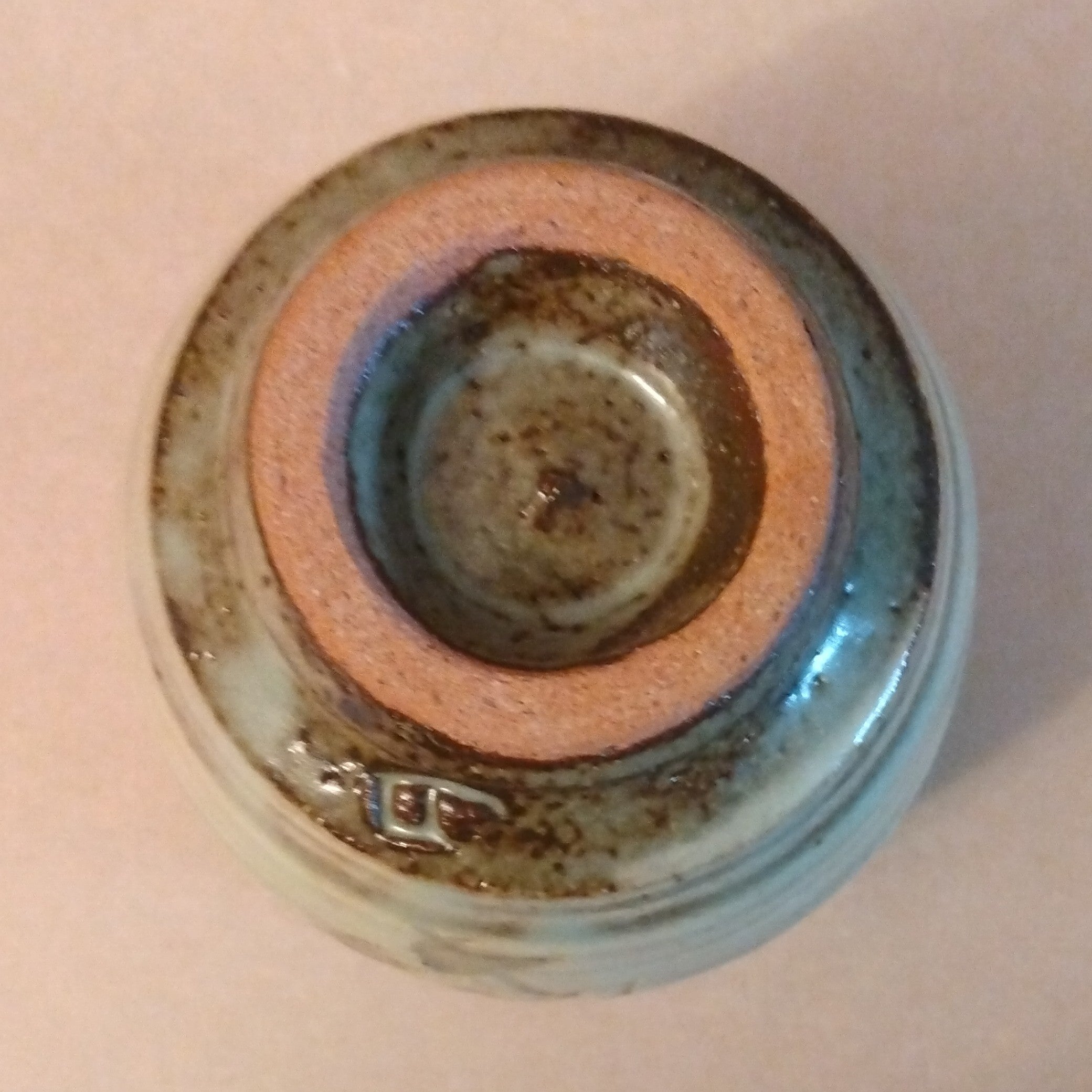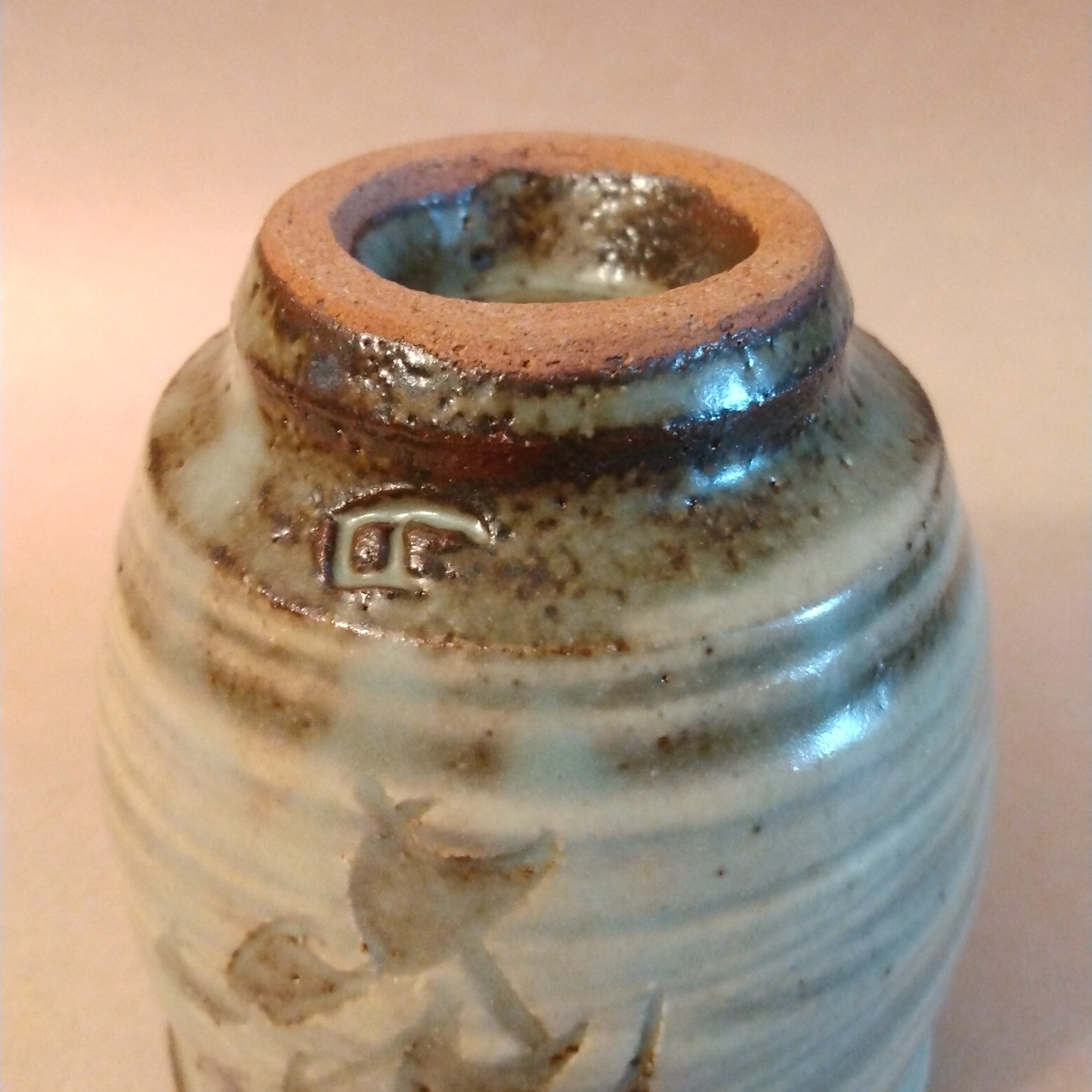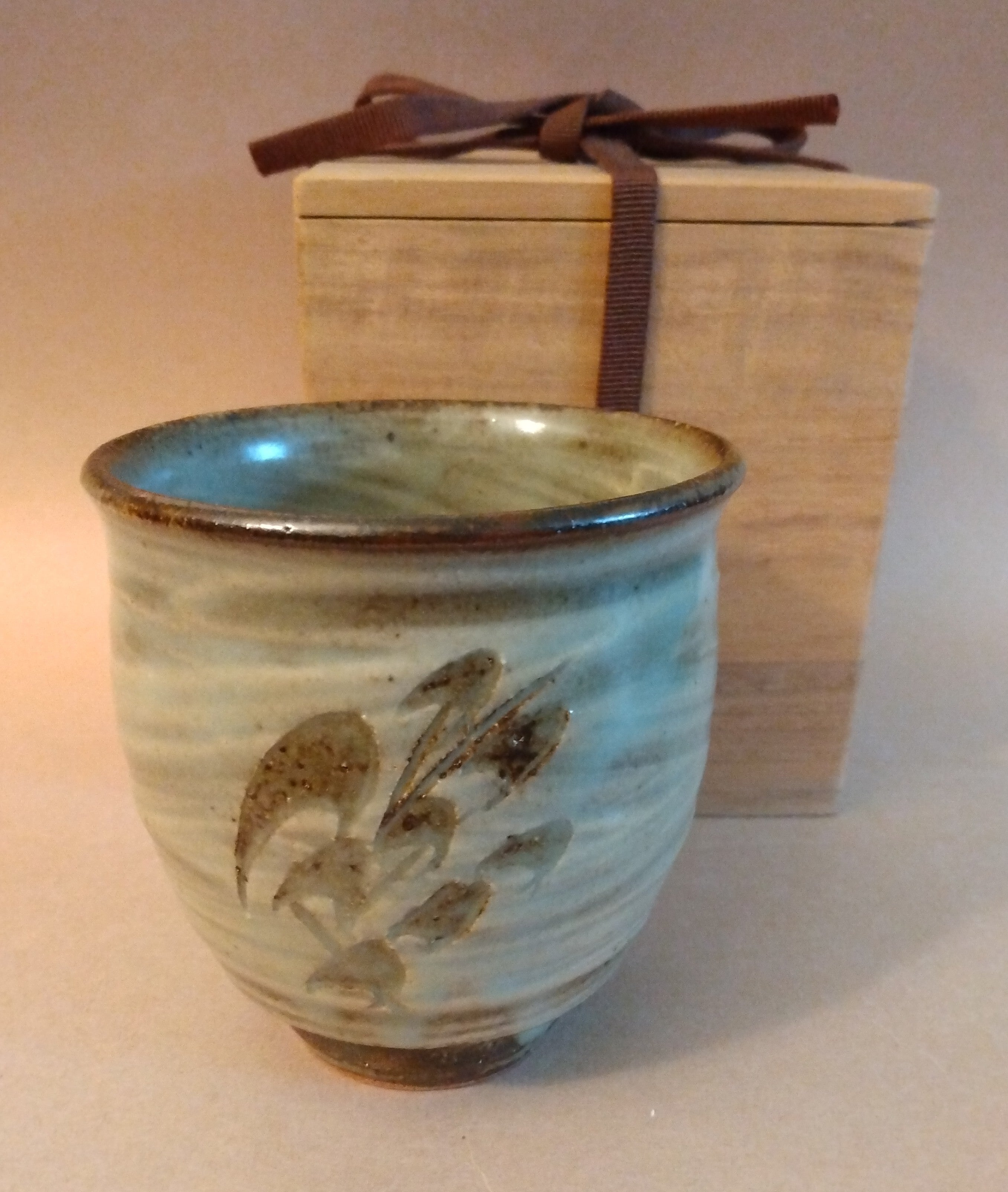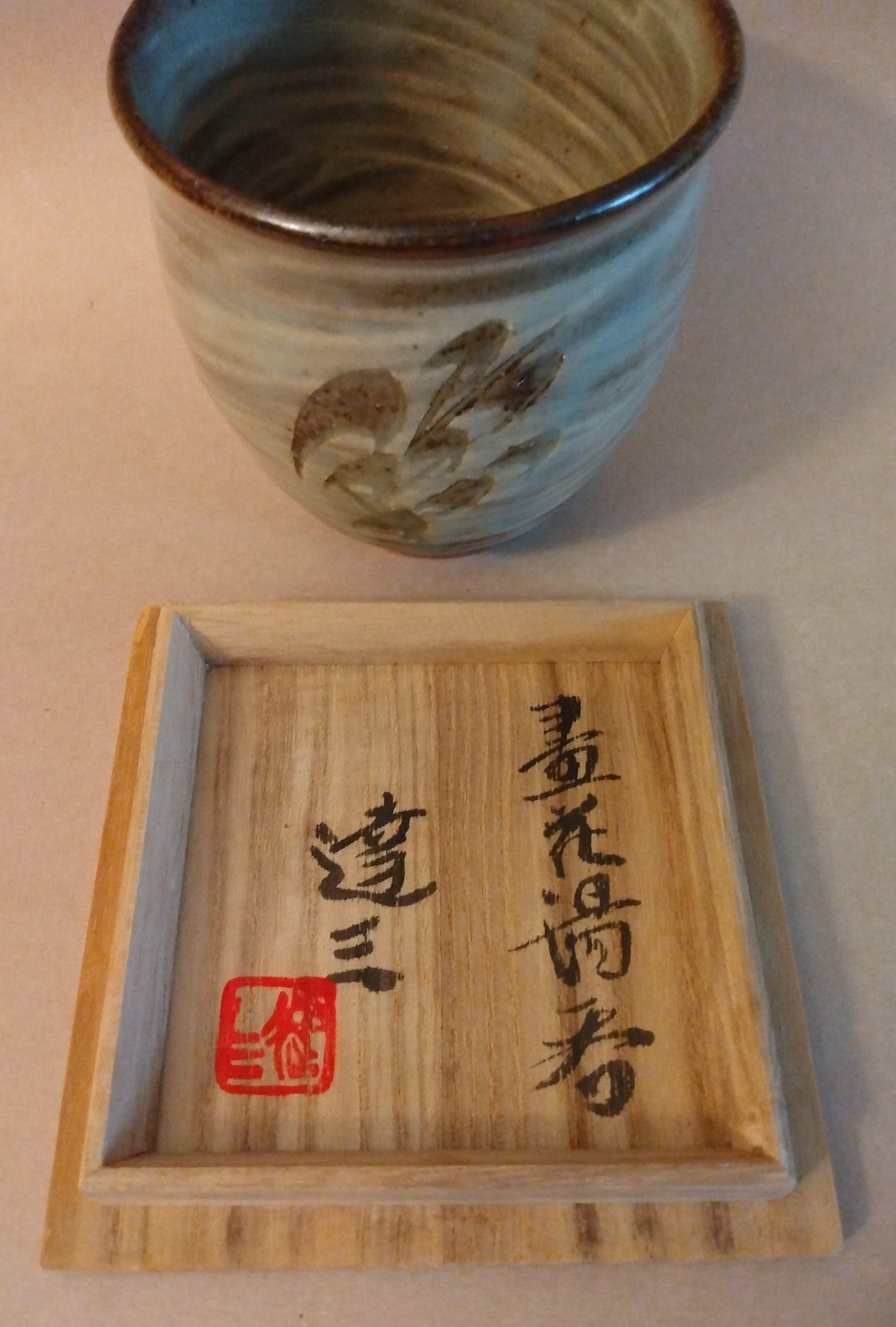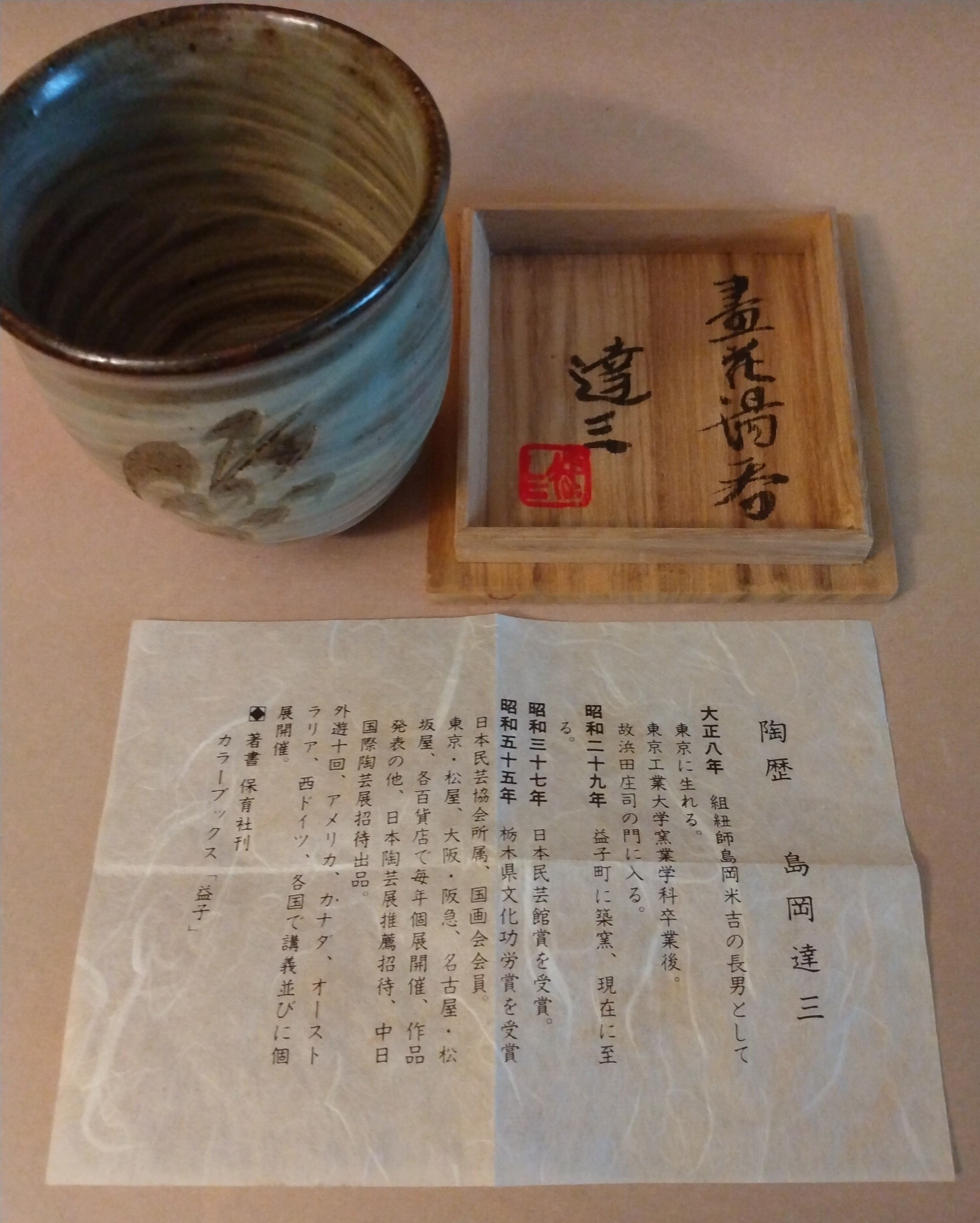Description
Yunomi, Tea Cup, by National Living treasure Shimaoka Tatsuzo, 1919-2007, of Mashiko, vintage, ca. 1980, with signed wooden box. Resist and carved pattern of leaves on front, and brush strokes in iron on back. Brushed slip Hakeme decoration on interior and exterior. The cup bears his signature "ta" katakana character mark just outside of the footring. H. 3.625" (9.5cm) x Dia. 3.5"(9cm). Weight 230 grams. Volume 340ml (11.5oz).
Shimaoka Tatsuzo was born in Tokyo in 1919. Inspired in his youth by the Japanese Mingei (Folk Craft) philosophy and aesthetic, he decided to become a folk potter early on. His father was also an artisan, a maker of kimono cords, which would figure into his later pottery career. He attended the Tokyo Institute of Technology before serving in the Japanese Army in World War II. It is said that he carried a tea bowl with him throughout his military service, including his time as a prisoner of war in Burma, such was his devotion to ceramics and aesthetics.
After the War, he began an apprenticeship in 1946 with Hamada Shoji in Mashiko. (Hamada Shoji, himself, would be designated a National Living Treasure in 1955 for "Folk Craft" style pottery). The formal apprenticeship with Hamada ended in 1949, but Shimaoka would establish his own kiln just next door to his master's kiln in 1953, after working at the Tochigi Prefectural Ceramics Research Center in the interim. He began exhibiting work in Tokyo in the 1950's and in 1974 had his first exhibition in the US., followed by an exhibition in Germany in 1977.
Shimaoka Tatsuzo was designated as a National Living Treasure in 1996 for his Joumon Zogan inlay work. His Joumon Zogan technique involves the use of braided cords being impressed into leather-hard pottery, then dried, filled with slip, then scraped to reveal their patterns. Many of the cords used were those made by his father, and artisan maker of cords for tying kimono. I had the chance to meet Mr. Shimaoka once during the time I lived in Mashiko, and to also visit his workshop a few times. Seeing many of the cords laid out on a board next to his work station was truly a memorable and emotional experience, knowing the connection between this work and his father's. His works also contains a variety of other techniques, such as salt-glazing, and over glaze enamel decoration.
His work has been been exhibited worldwide, and he has also taken on many apprentices from outside of Japan, during his long career. His influence on the pottery world has been truly monumental.
The town of Mashiko is located about 70 miles northwest of Tokyo, in Tochigi Prefecture. Although there is evidence of pottery manufacture in the region of Mashiko as far back as the 8th century; production in the modern age began in 1853, making it a relatively young pottery center by Japanese standards. However, whereas many traditional pottery towns disappeared when Japanese lifestyle changes made many functional clay items obsolete, Mashiko has survived and thrived as one of the largest pottery communities in the world. Much of this can be credited to life and work of Shoji Hamada, who decided to settle in this traditional clay village. Although he was a contemporary artist, he showed great respect for the work of traditional artisans, for the natural materials available from the region, and for the "Other Power" of tradition. He was a leading figure in the Japanese Folk Craft Movement, along with Soetsu Yanagi and others; such as potters Bernard Leach and Kanjiro Kawai, textile artist Keisuke Serizawa, and woodblock printer Shiko Munakata. Hamada was designated as a National Living Treasure for his preservation of Mingei (Folk Craftâ) pottery and promoted an openness which led many to follow his path to Mashiko. In the early 2000's, there are some 400 kilns operating in and around Mashiko making a wide variety of wares; from traditional styles and patterns to modern artistic works.


